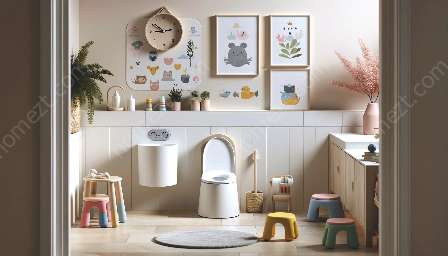Introduction
Potty training is a significant milestone in a child's development and can sometimes be challenging. This article will provide comprehensive guidance on potty training and address the issue of bedwetting. We will also explore how the nursery and playroom can be optimized to support successful potty training.
Potty Training
Potty training is a major achievement in a child’s early years and usually occurs between the ages of two and three. The process involves teaching a child to use the toilet for urination and bowel movements instead of relying on diapers. Here are some strategies to facilitate successful potty training:
- Start at the Right Time: Look for signs of readiness such as staying dry for longer periods, showing an interest in the toilet, and being able to communicate their needs.
- Establish a Routine: Create a consistent schedule for toilet visits, including after meals and before bedtime.
- Use Positive Reinforcement: Offer praise and rewards when the child successfully uses the toilet.
- Make it Fun: Introduce books, songs, and games related to potty training to make the process enjoyable.
- Stay Calm and Patient: Accidents are normal, so remain calm and supportive throughout the process.
Bedwetting
Bedwetting, or nocturnal enuresis, can be concerning for parents and children. It is a common issue that often resolves on its own, but there are steps you can take to help manage bedwetting:
- Understanding Causes: Identify potential triggers such as deep sleep, small bladder capacity, or emotional stress.
- Encourage Hydration: Ensure your child drinks plenty of fluids during the day but limit intake before bedtime.
- Protect the Bed: Use waterproof mattress covers to simplify cleanup and reduce embarrassment for the child.
- Seek Medical Advice if Necessary: If bedwetting persists, consult a pediatrician to rule out any underlying medical conditions.
Creating a Conducive Environment in the Nursery and Playroom
Optimizing the nursery and playroom can greatly aid in the potty training process. Here are some tips to create a supportive environment:
- Accessible Facilities: Ensure that the child can easily access the potty or toilet from the playroom and nursery.
- Comfortable Seating: Choose comfortable and child-friendly potty chairs or toilet seats that the child will feel at ease using.
- Learning Resources: Incorporate educational materials about potty training and hygiene in the playroom to familiarize the child with the process.
- Positive Reinforcement: Use playful and encouraging décor, such as charts or stickers, to celebrate potty training achievements.
- Establishing Routines: Encourage regular bathroom breaks during playtime and designate specific times for potty training-related activities.
Conclusion
Successfully navigating the potty training and bedwetting stages requires patience, understanding, and practical strategies. By creating a nurturing and supportive environment in the nursery and playroom, parents can facilitate a smooth transition from diapers to using the toilet independently. Remember that every child's journey is unique, and with the right approach, potty training and managing bedwetting can be accomplished with confidence and care.


